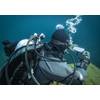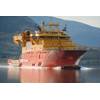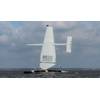Risk-based Approach to Valve Testing Could Save Money
Reducing expenditure while continuing to improve safety and reduce risk is a key driver for the oil and gas industry especially in today’s cost constrained environment. DNV GL and ExproSoft are now joining forces to offer a risk based approach to testing barrier valves in subsea completed wells applicable worldwide. The objective is to reduce both downtime and risk related to shut-in and restart of wells in addition to substantial cost savings.
“In Norway, today’s current prescriptive approach to well testing can result in up to 3 days lost production per test, equivalent to US$10M per asset. Changing today’s prescriptive test intervals and leak criteria to a risk and reliability-based approach, will achieve substantial year-on-year cost savings for operators in Norway and elsewhere,” said Kjell Eriksson, Regional Manager - Norway, DNV GL - Oil & Gas. “Our experts can use established methodologies from the process industry and safety systems to reduce the number of shut-ins and well downtime, thus lowering the need for expensive interventions and work-overs. All this can be attained while maintaining acceptable risk levels and meeting regulatory requirements.”
Currently, the NCS regime refers to NORSOK D-010 for well barrier testing and testing frequencies and leak criteria for well barrier valves are determined by API 14B/ISO 10417. DNV GL and Exprosoft will undertake a project to develop the risk based approach which will identify failure modes and causes, failure rates, analyze the consequences, establish a risk picture and translate the results into a recommended test frequency. Further, a method to develop risk-based leak acceptance criteria may also be an outcome of this work. The results can be applied globally and will be available in Q1 2016.
DNV GL and ExproSoft‘s strategic cooperation and partnership agreement brings together ExproSoft’ s WellMaster, the world’s largest repository of reliability data for wells based on morethan 40,000 well years of historical data, with DNV GL’s risk management expertise. “For an offshore platform with 25 wells producing 50 000 barrels a day, the average annual intervention cost is $26 Million,” said ExproSoft’ s CEO, Odd Are Svensen. “We are looking forward to working closely with DNV GL to combine our equipment reliability services with DNV GL’s risk management expertise to reduce intervention cost.”
Oil and gas operators in the US, UK and Norway use and share reliability data throughout the well’s lifecycle globally, and experience increased uptime, reduced cost (CAPEX and OPEX), and improved understanding of risk and failures, through access to the WellMaster Reliability Management System (WRMS) from ExproSoft.

















 February 2024
February 2024



